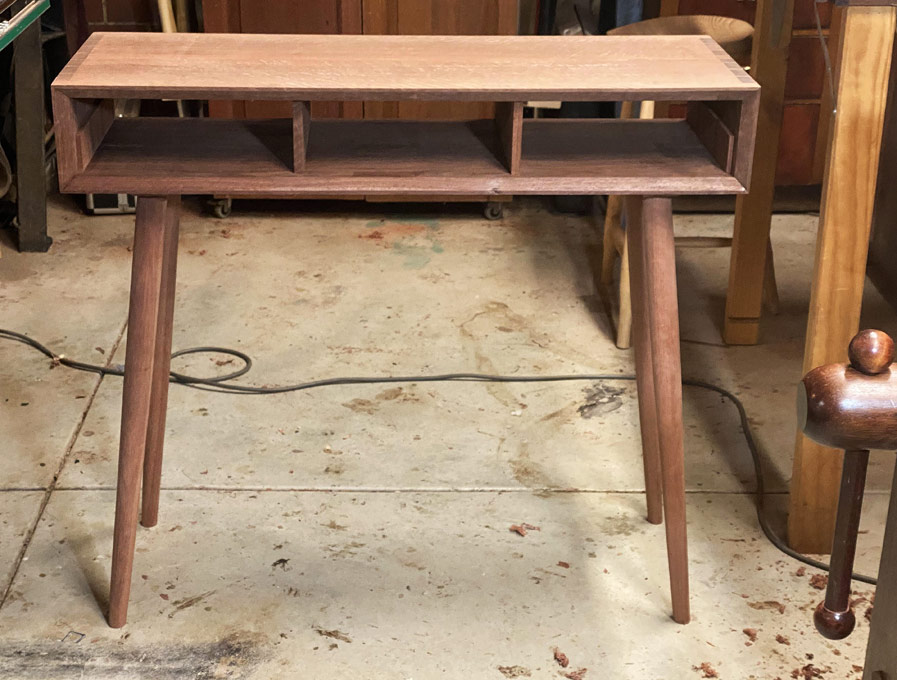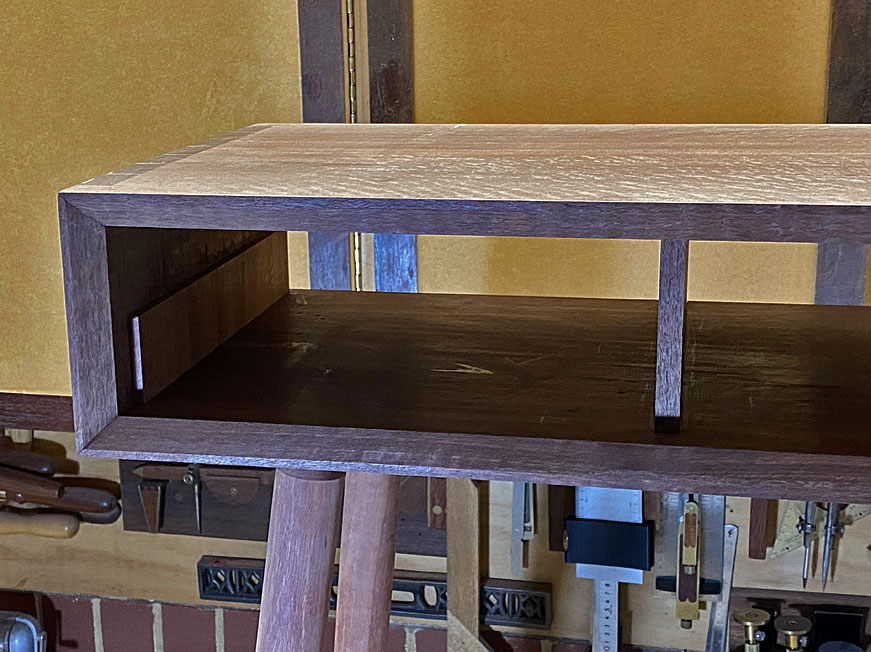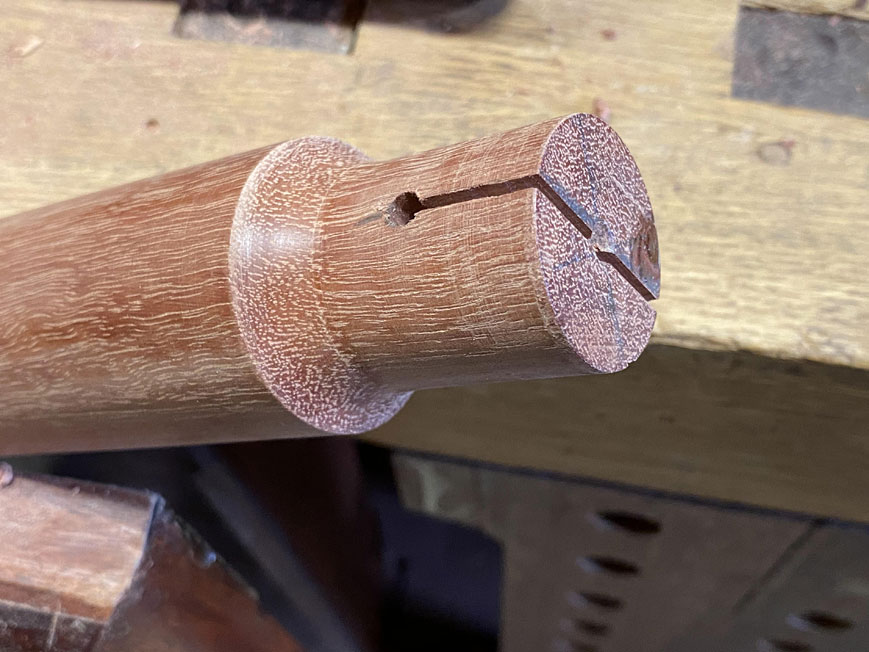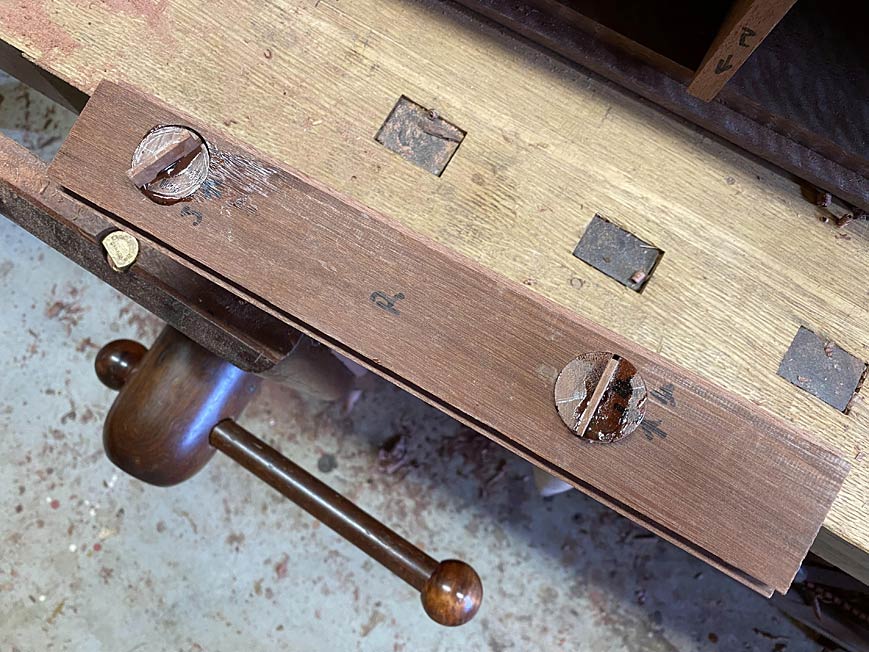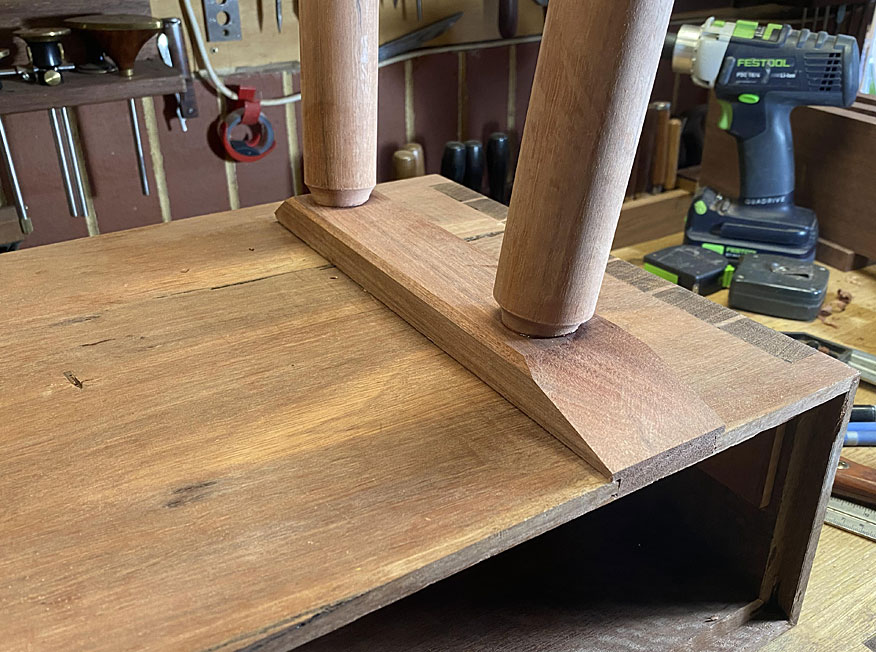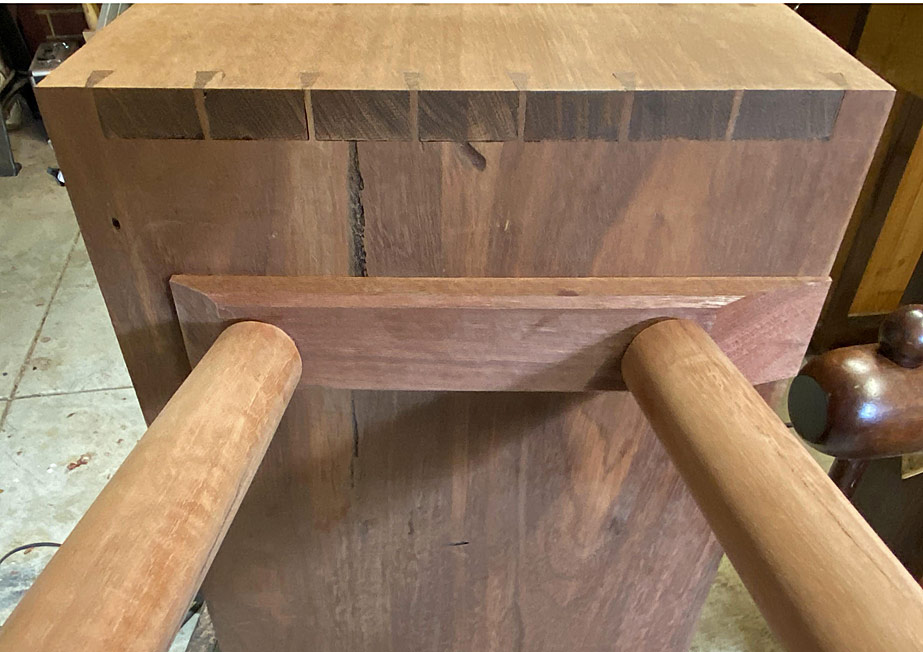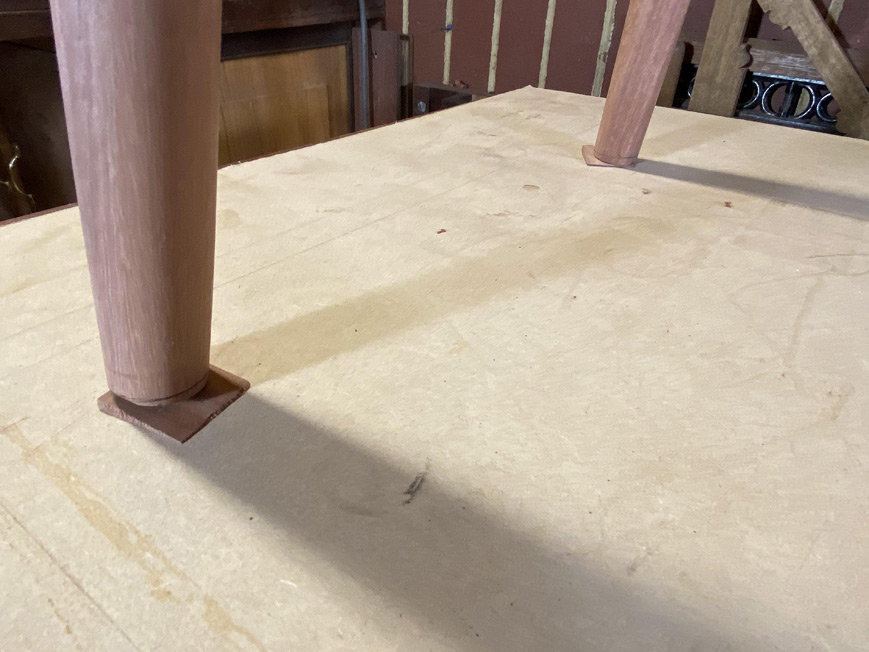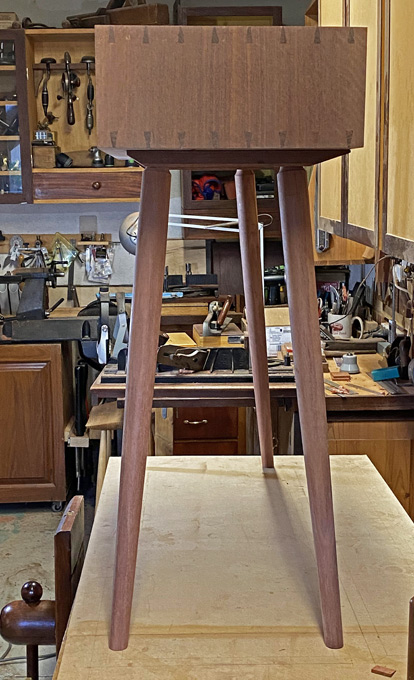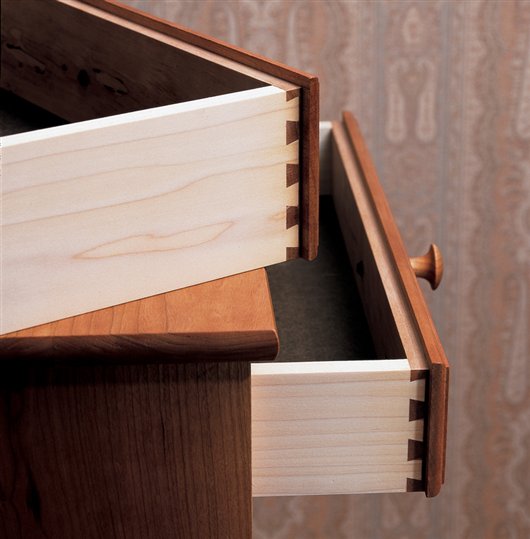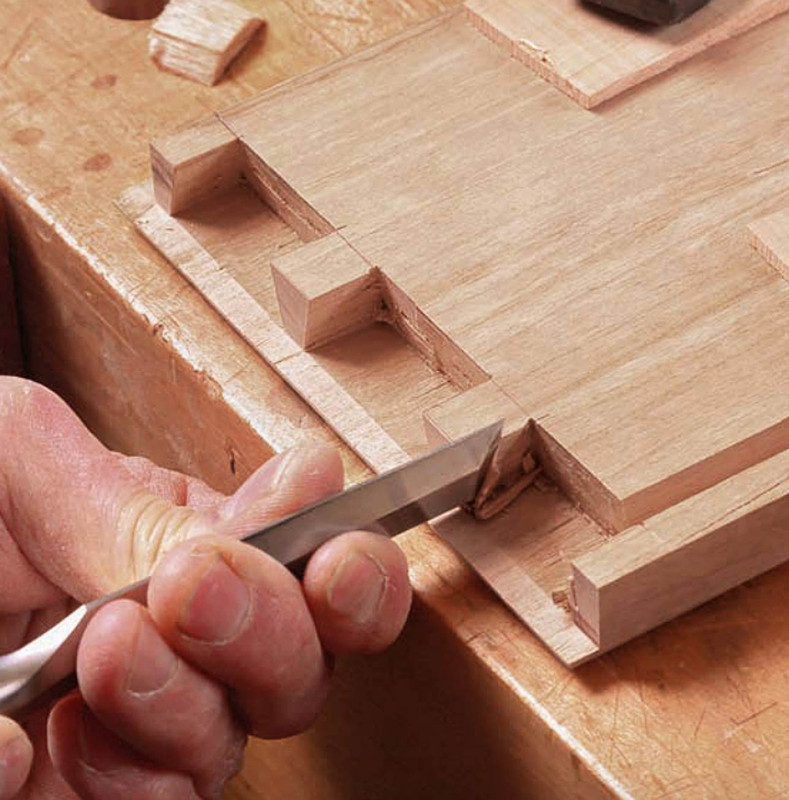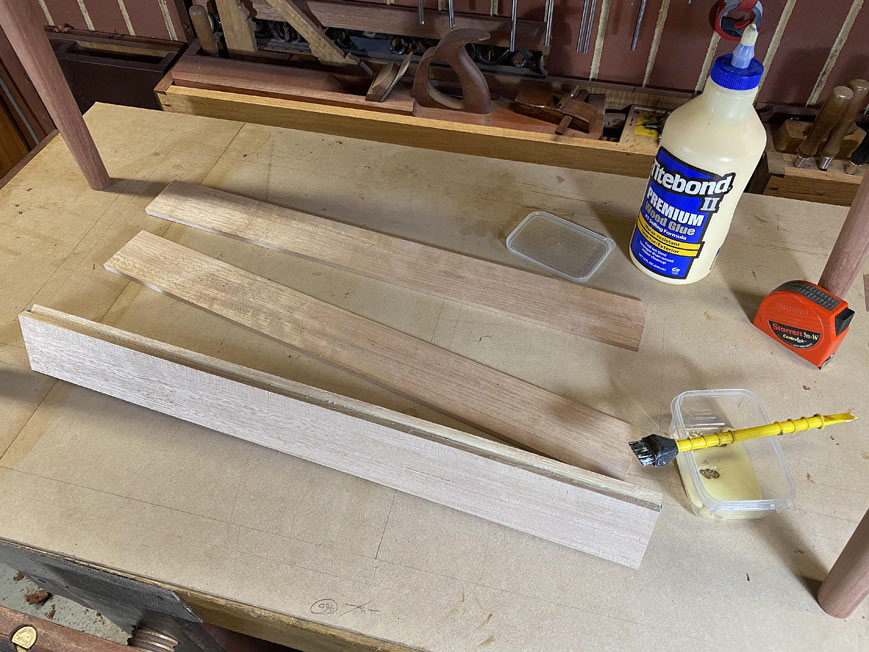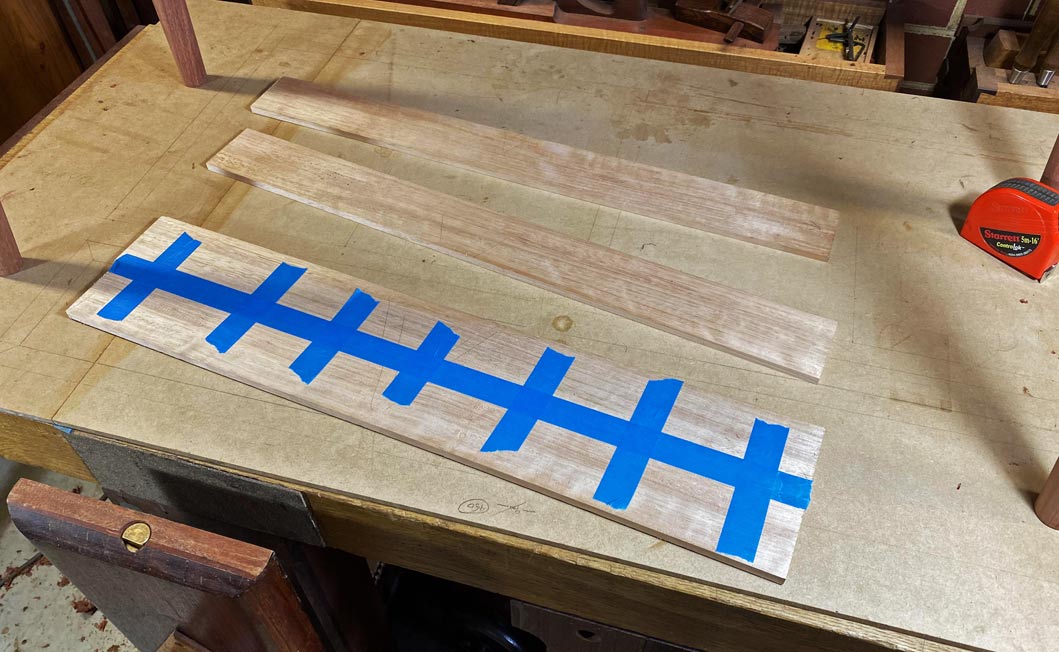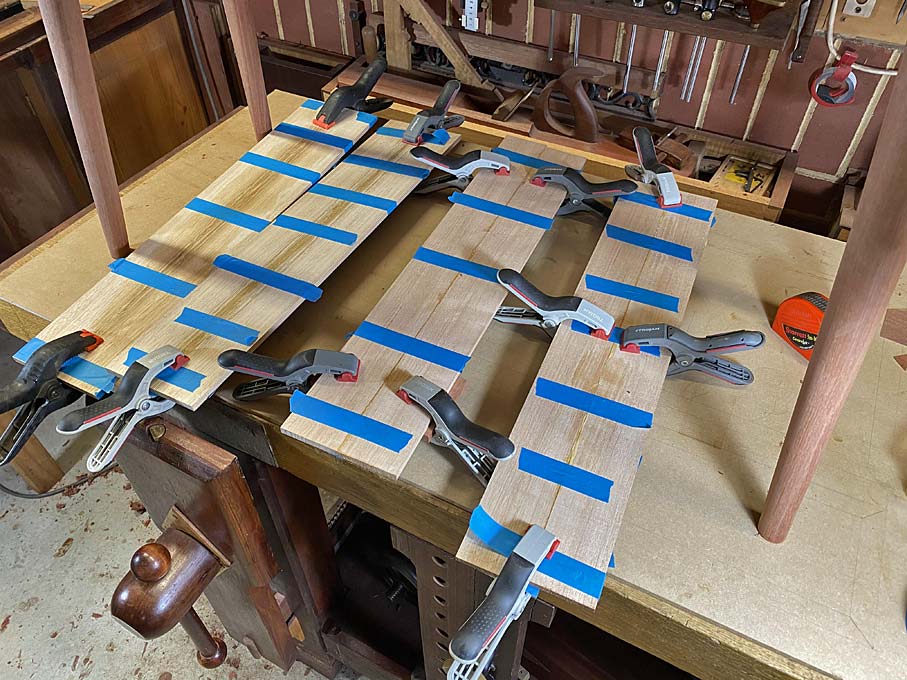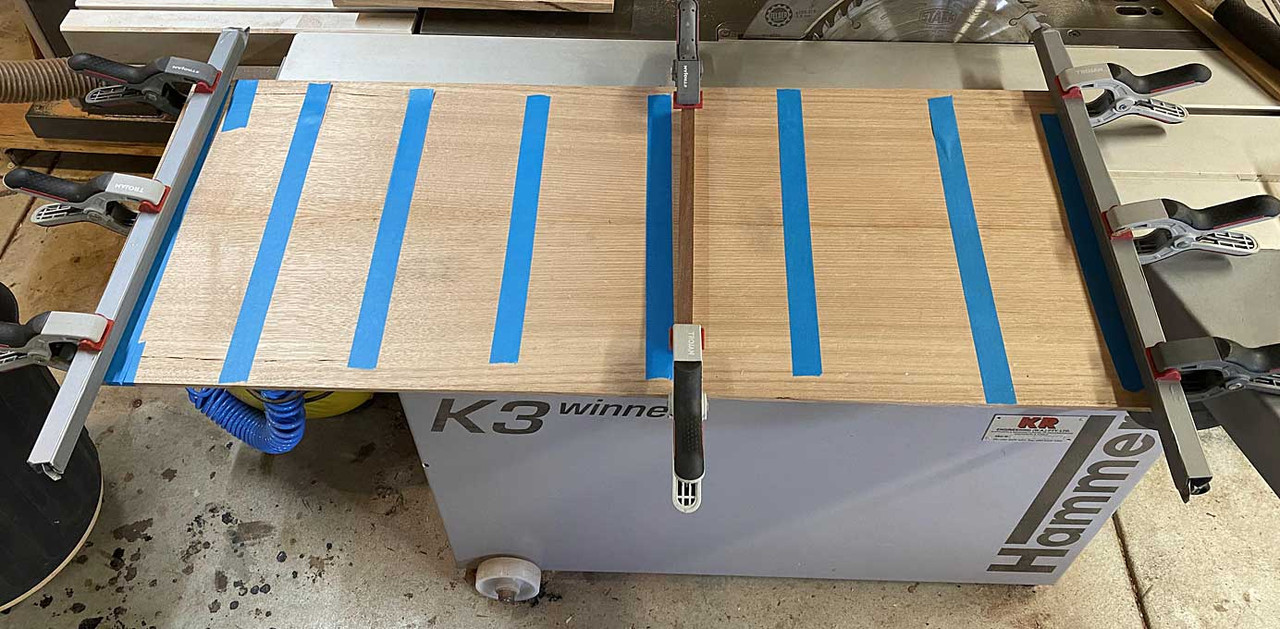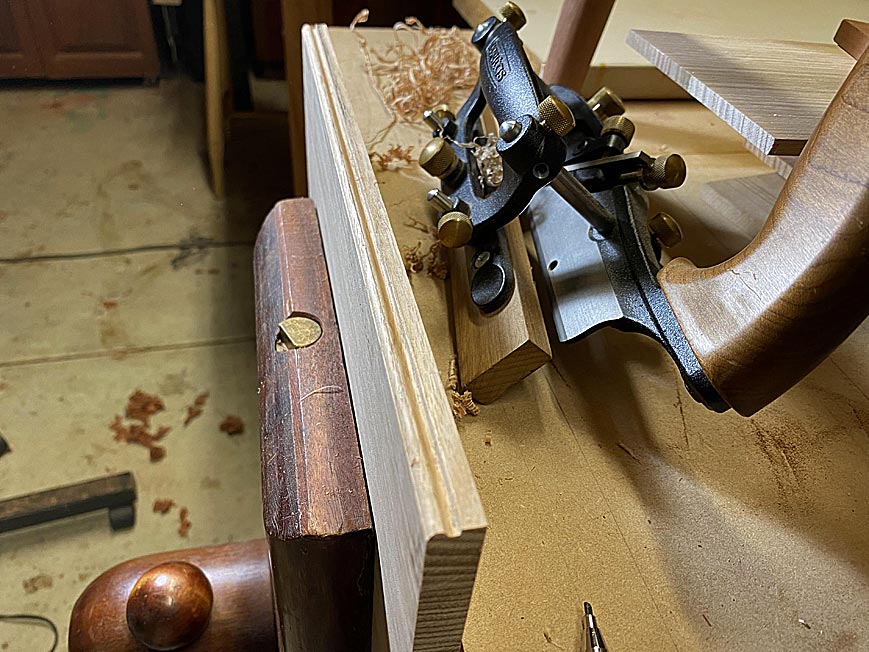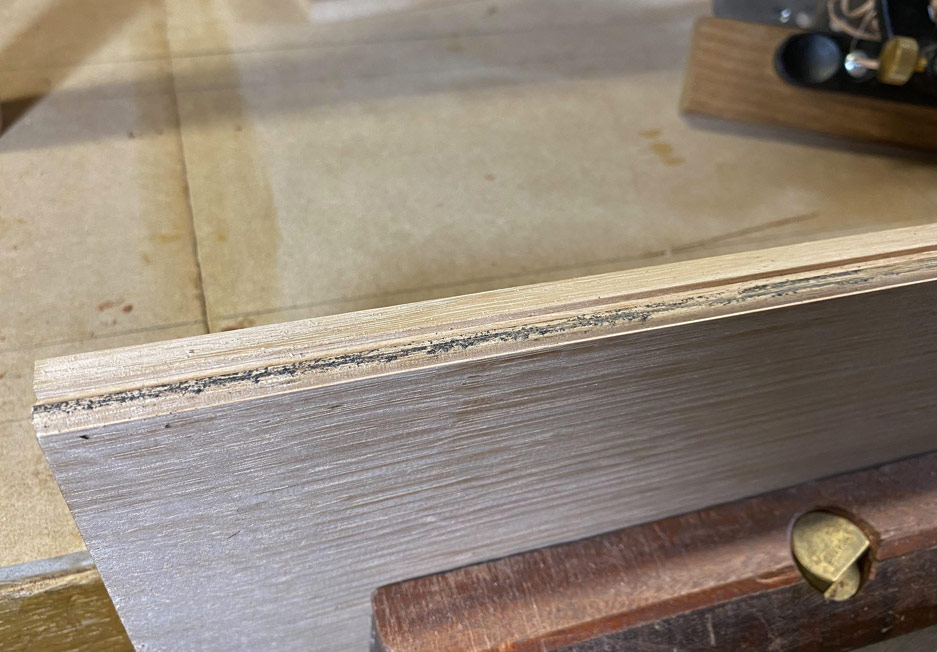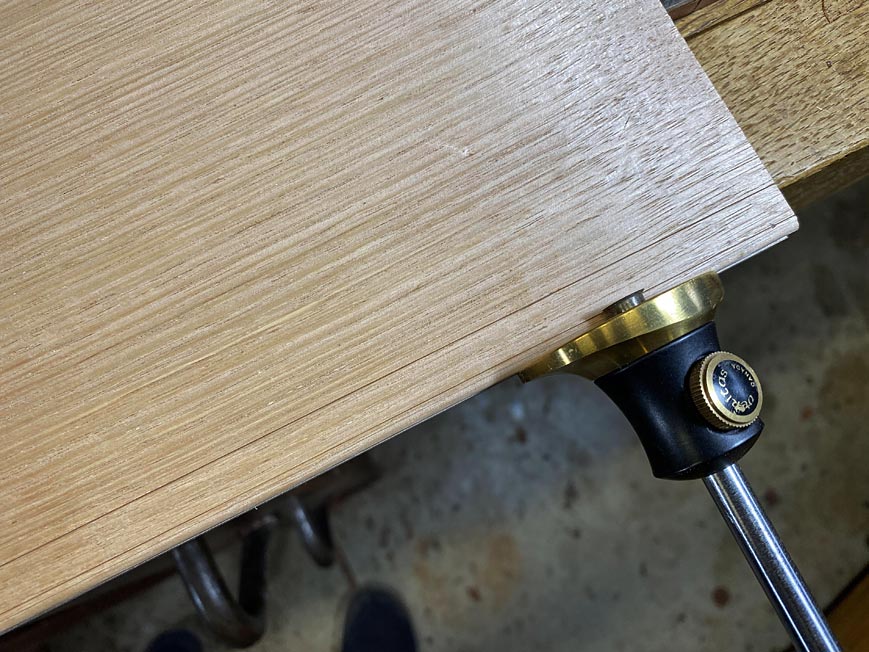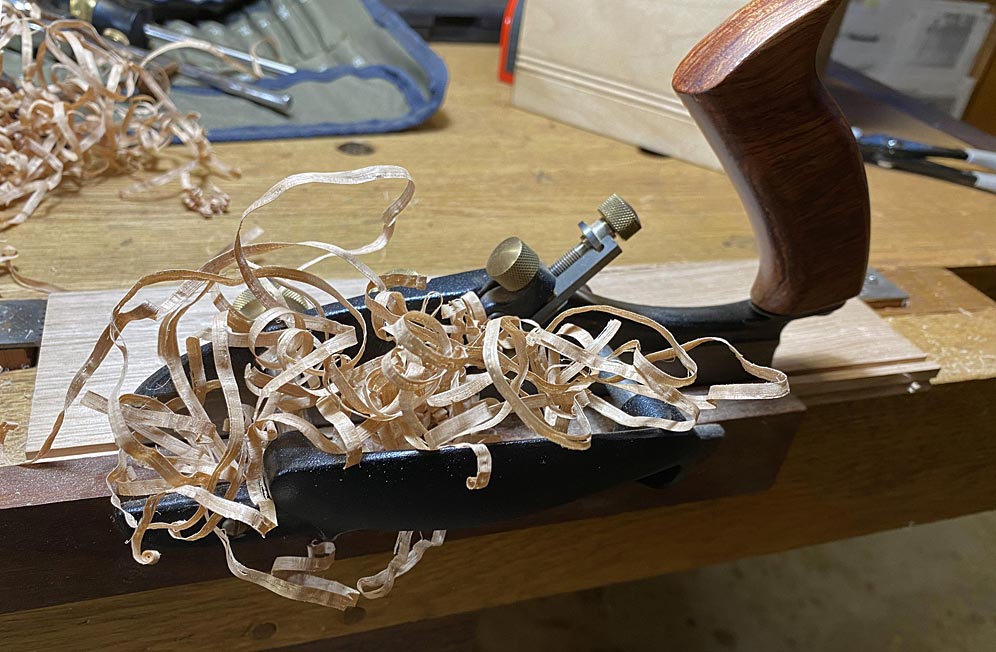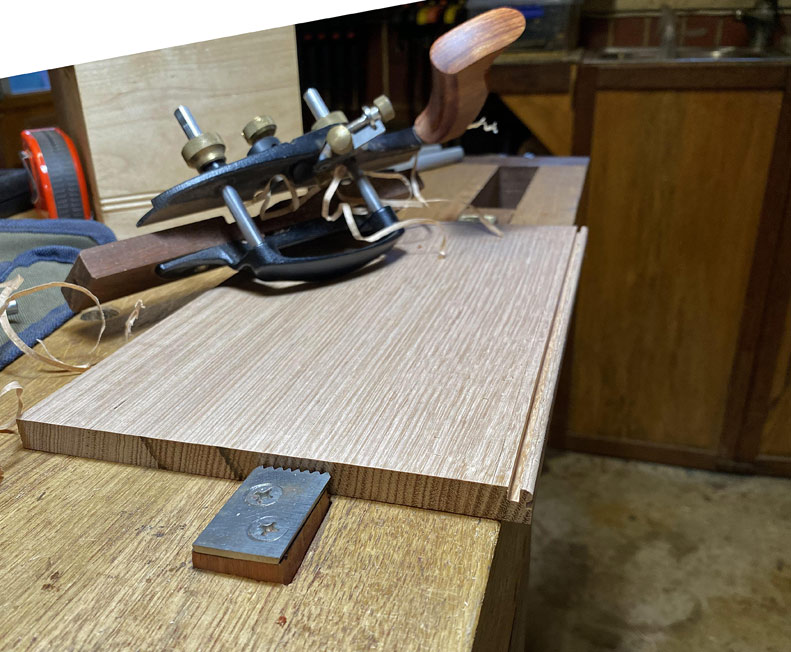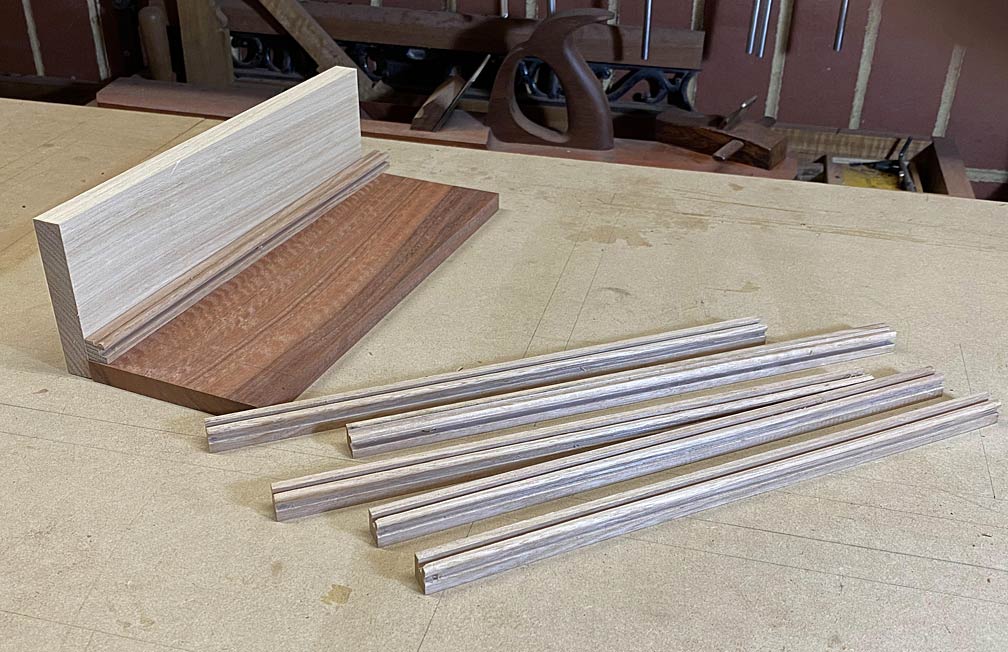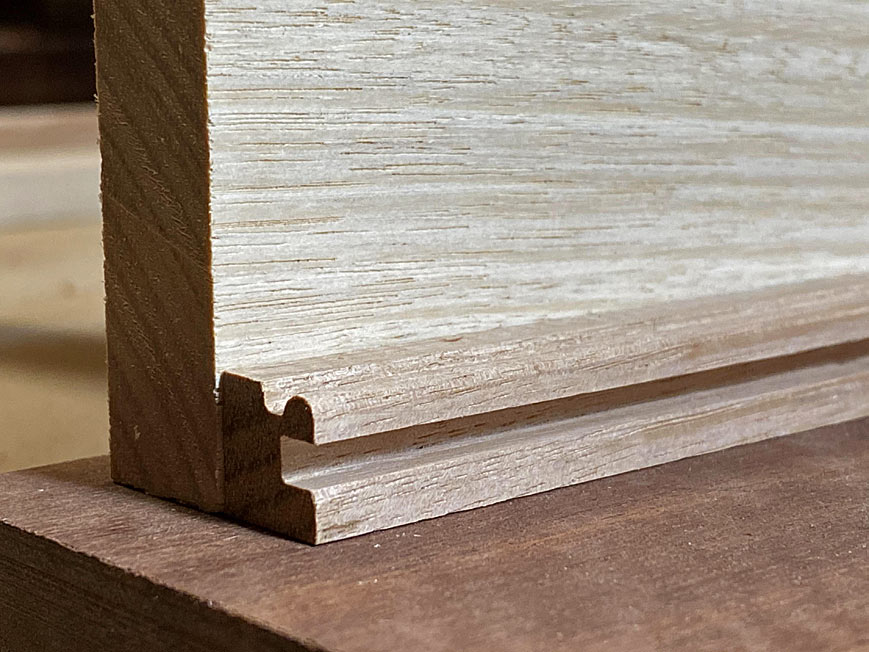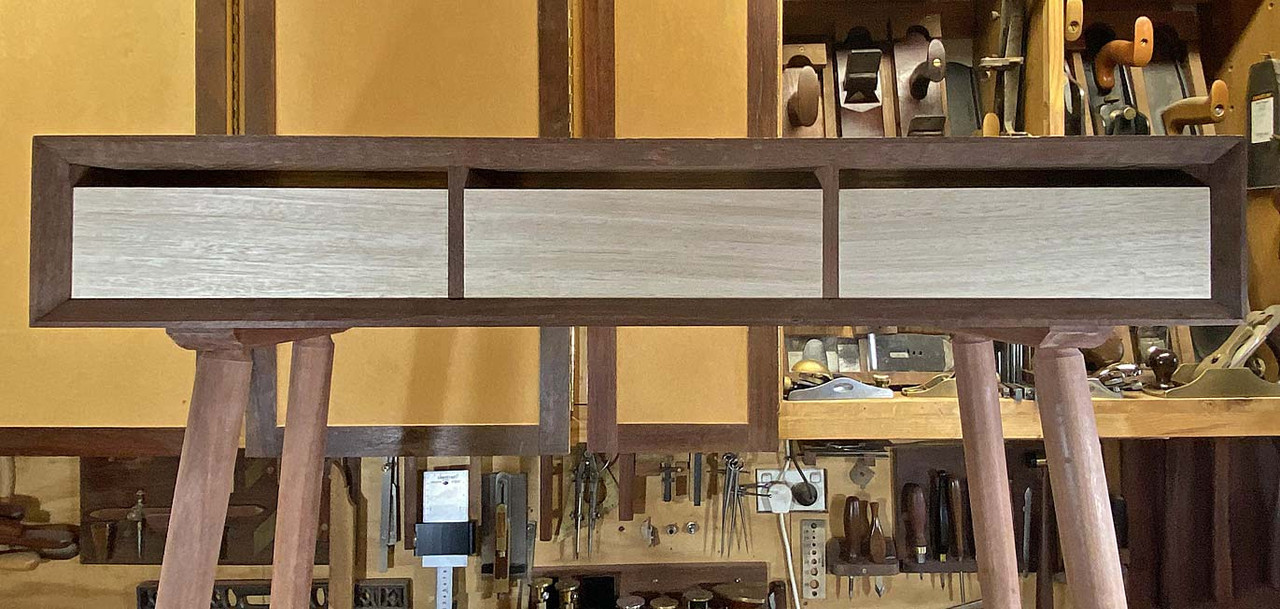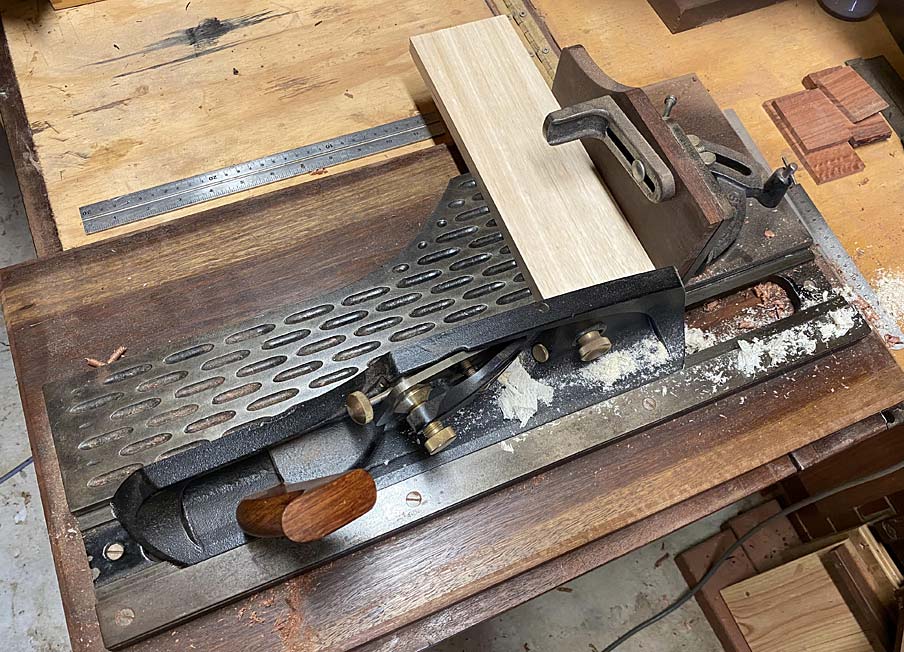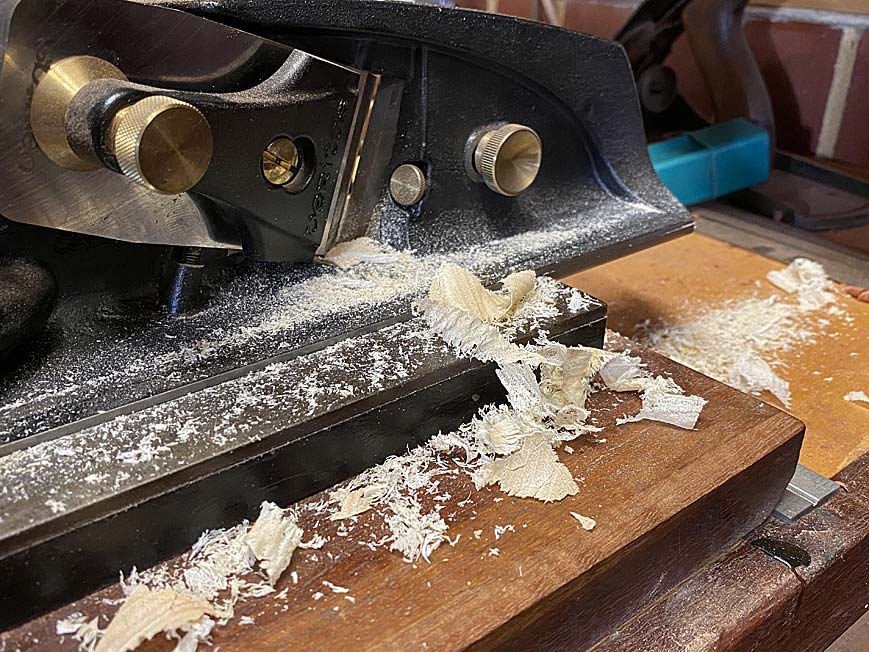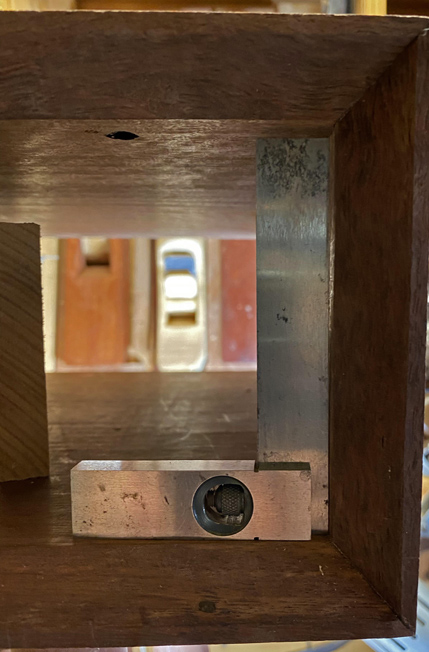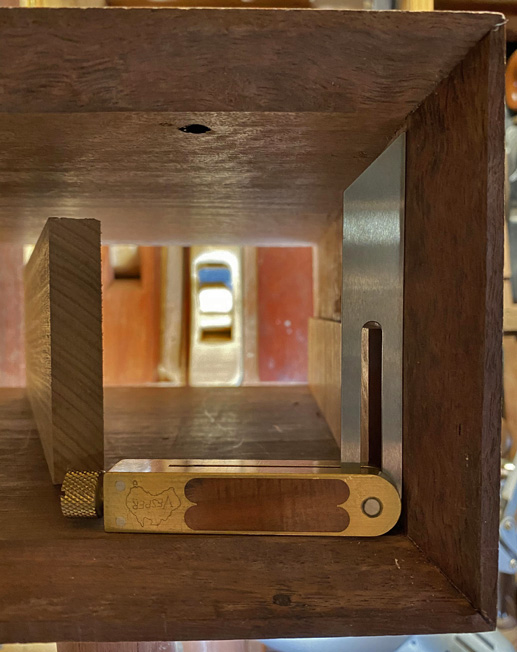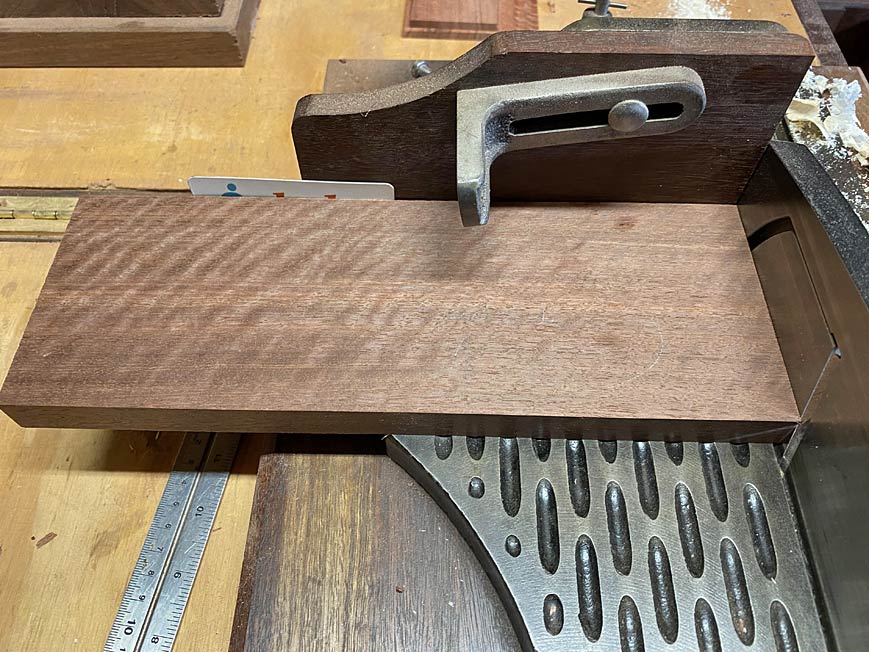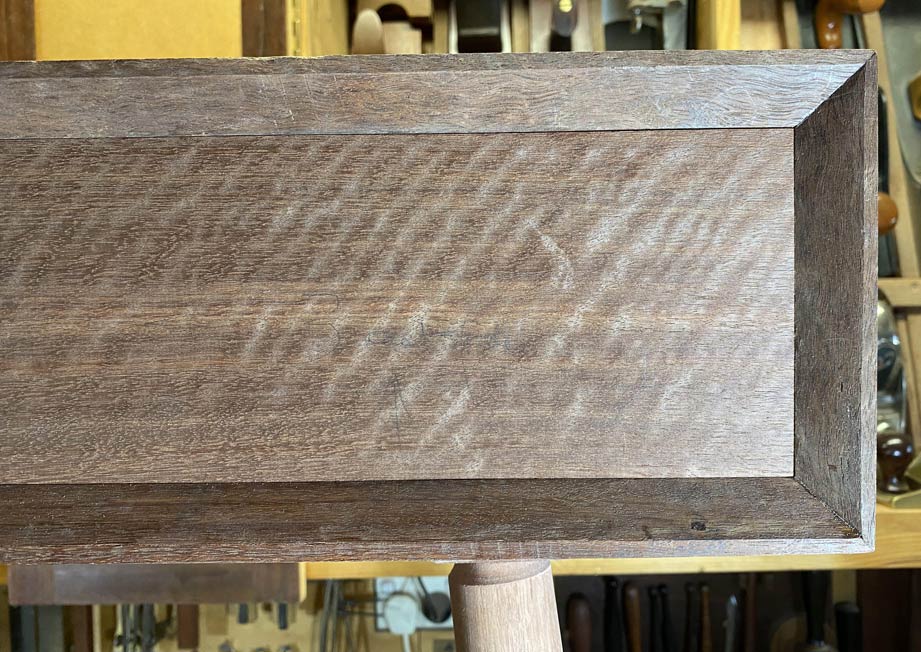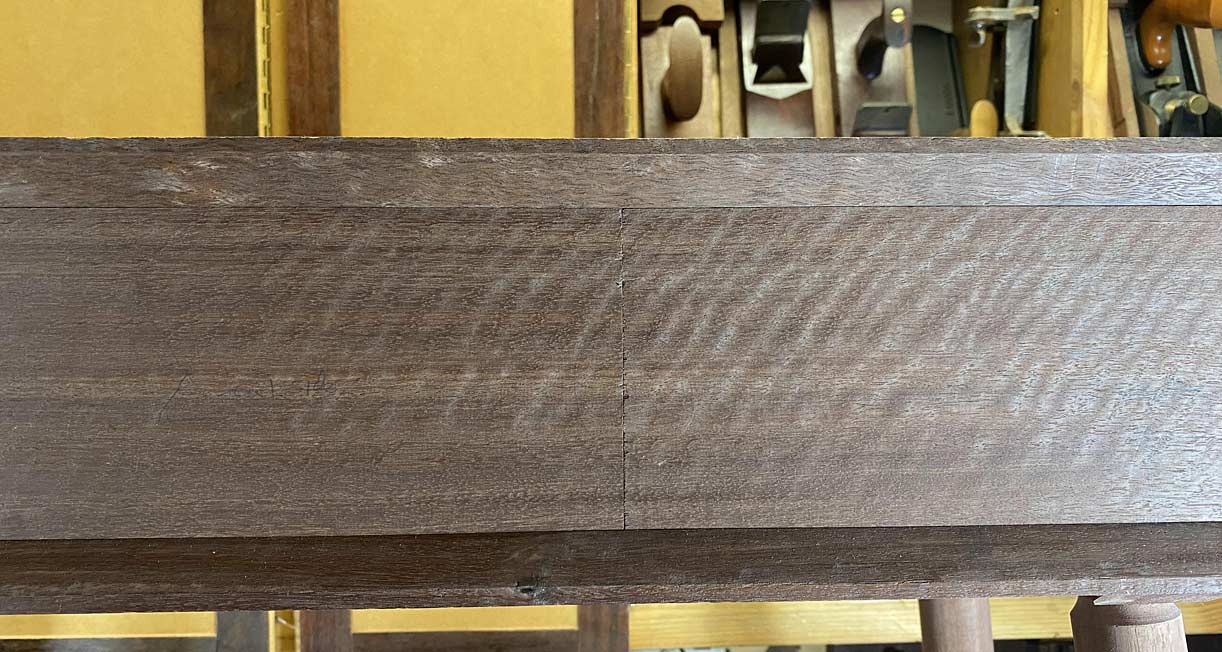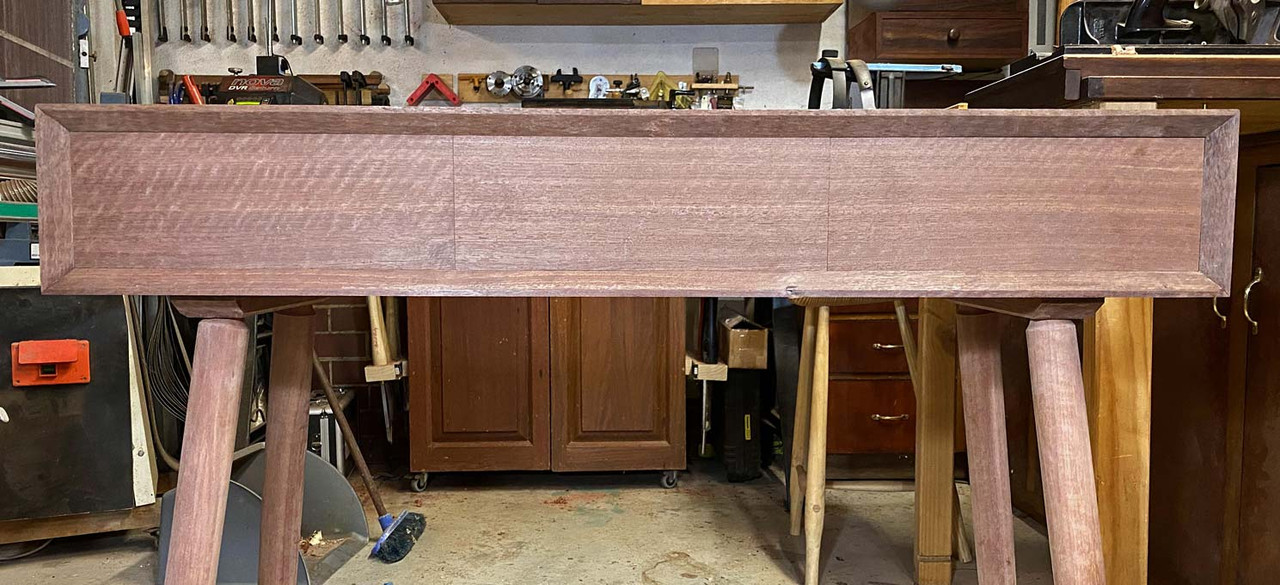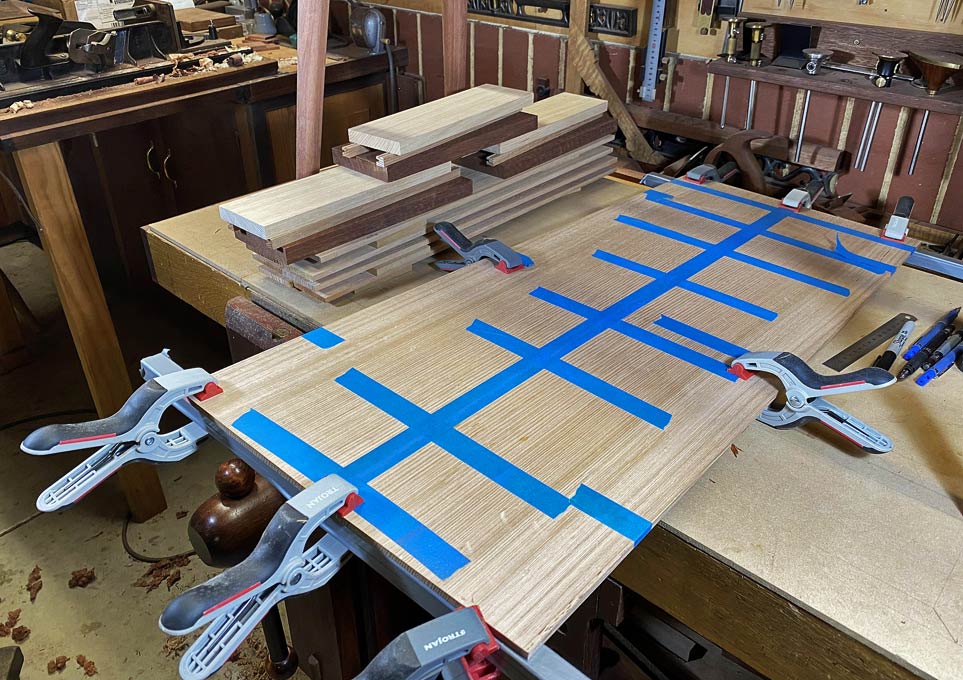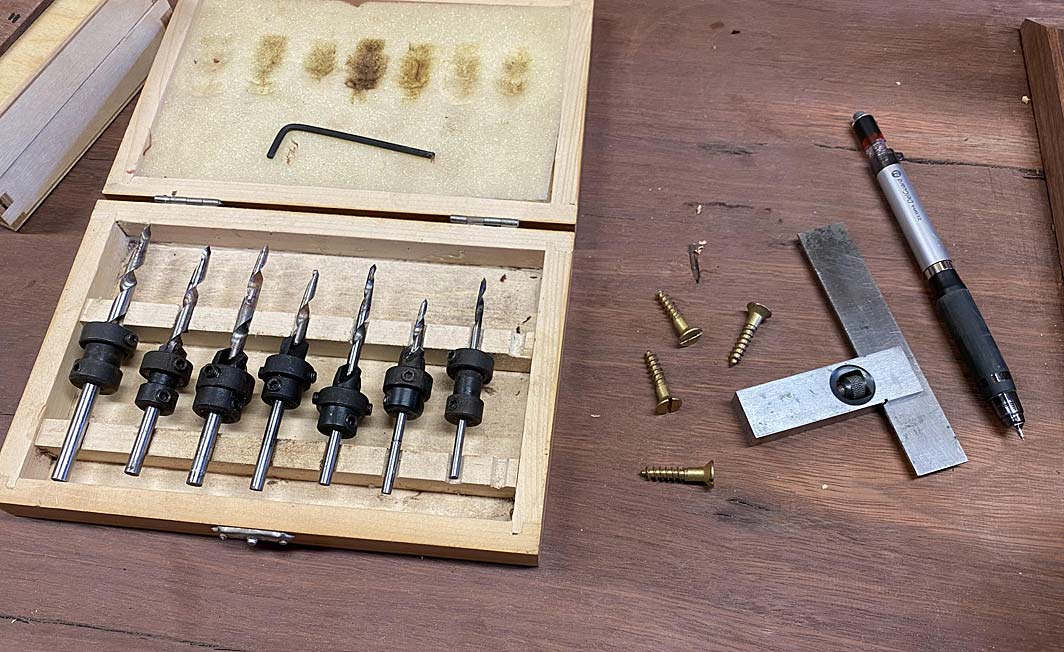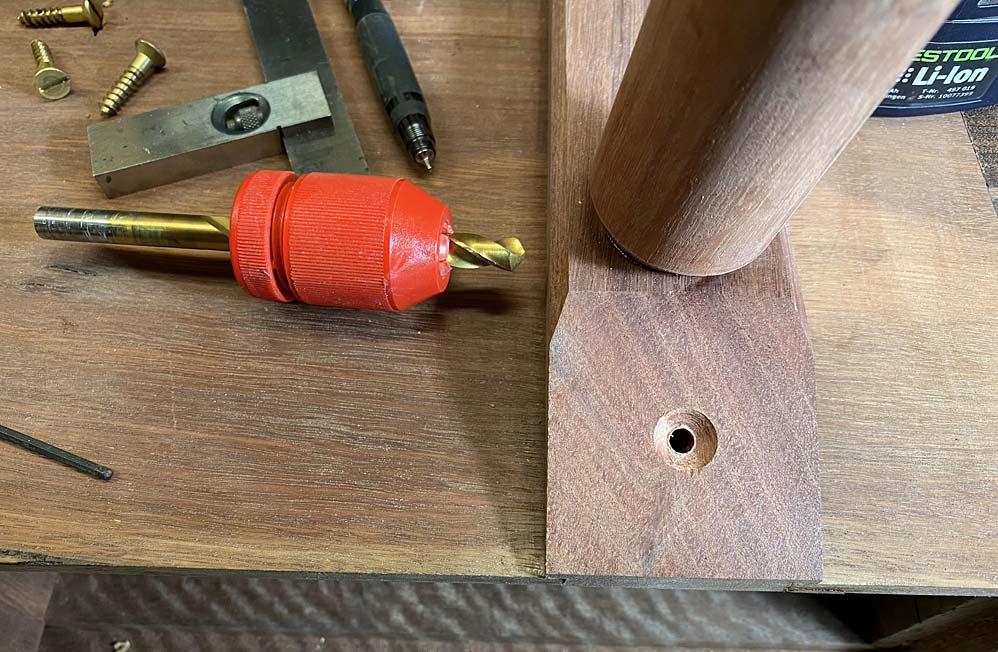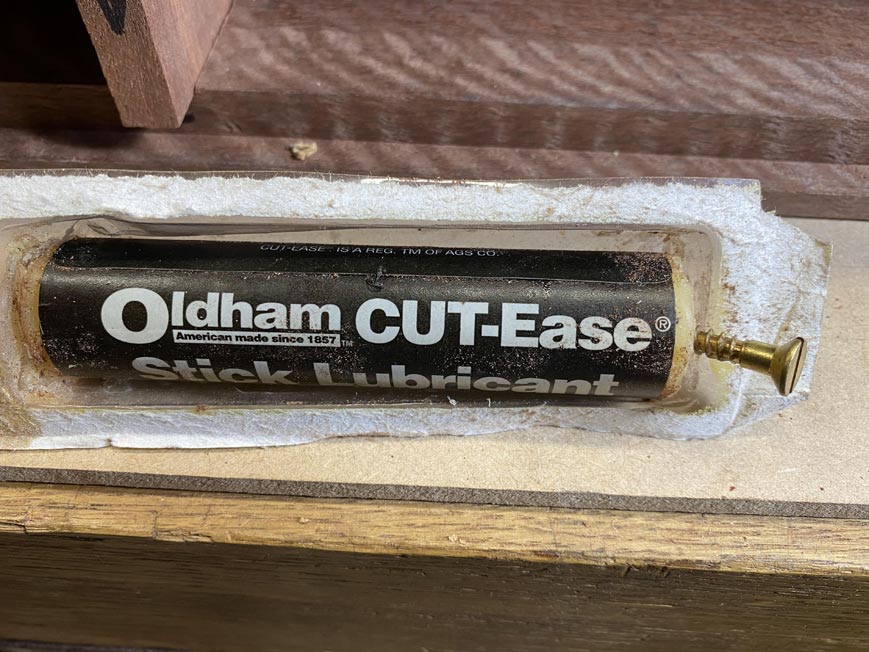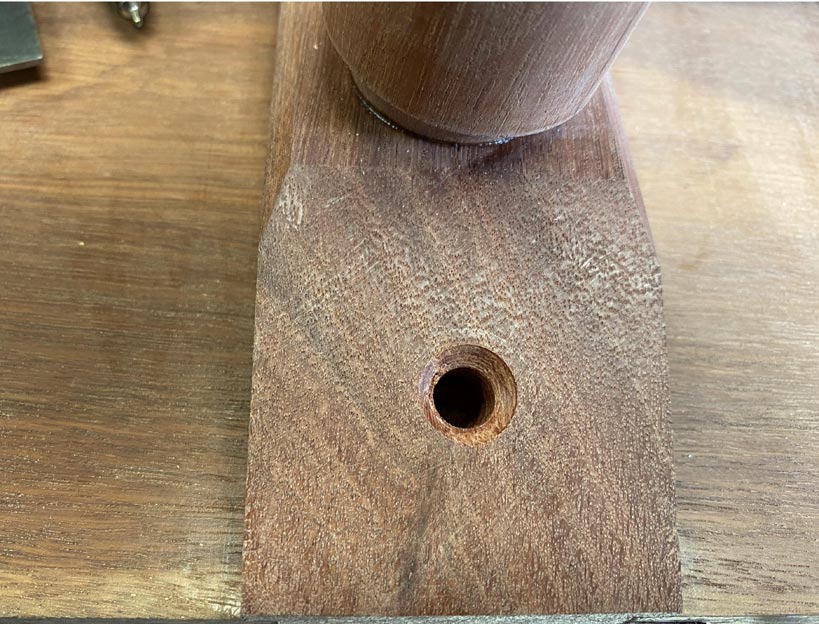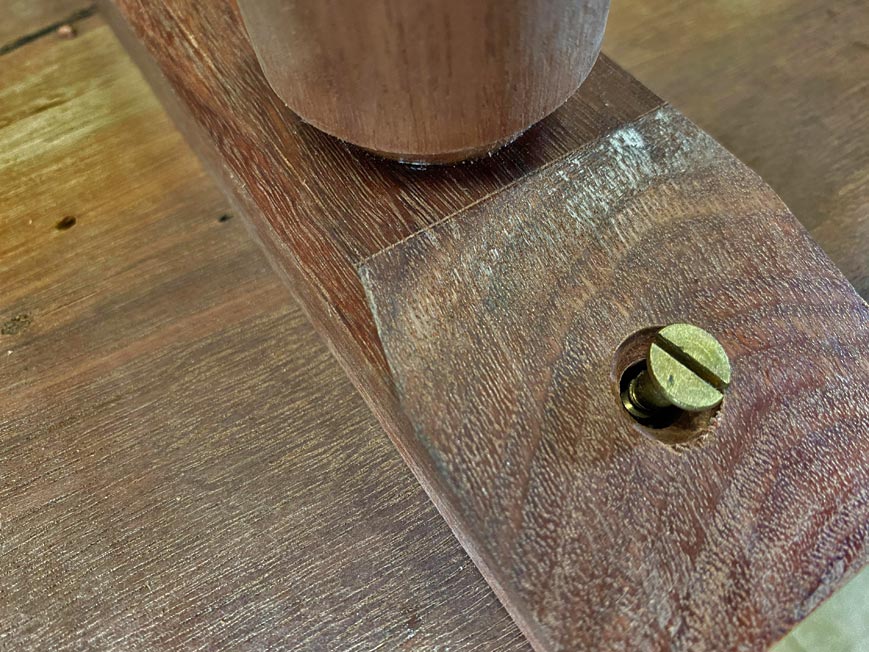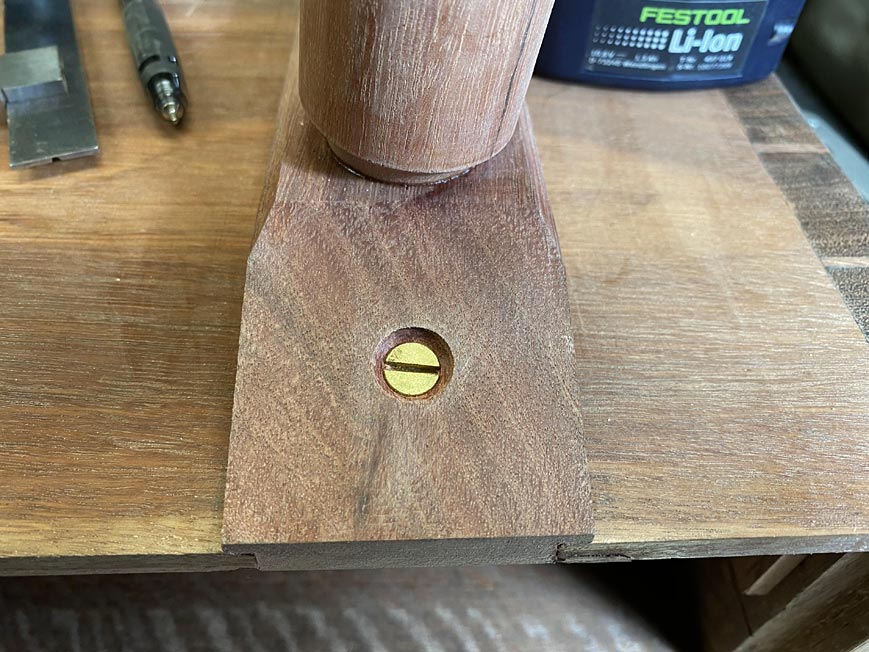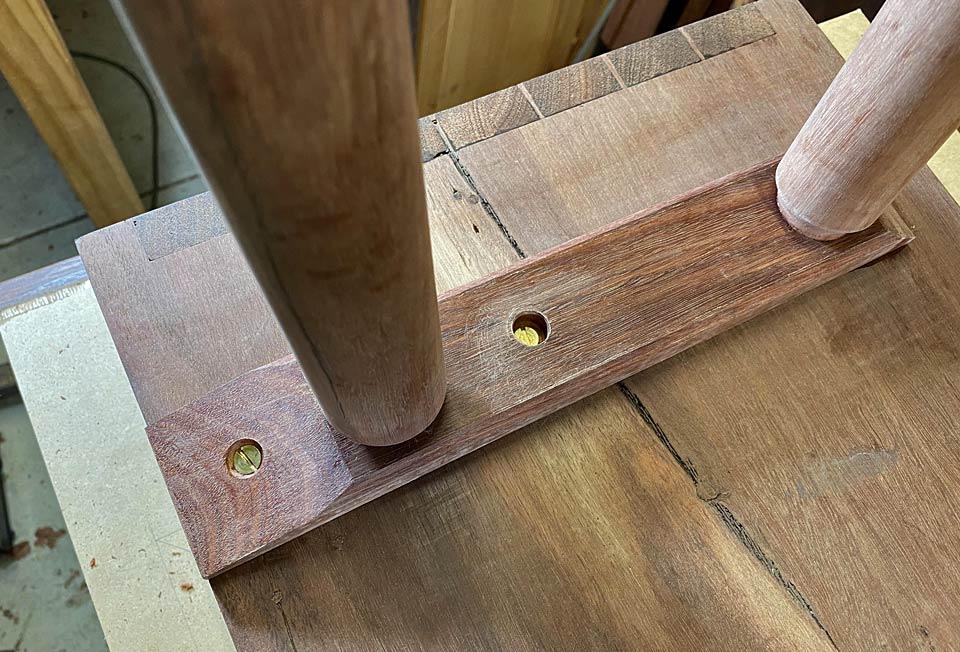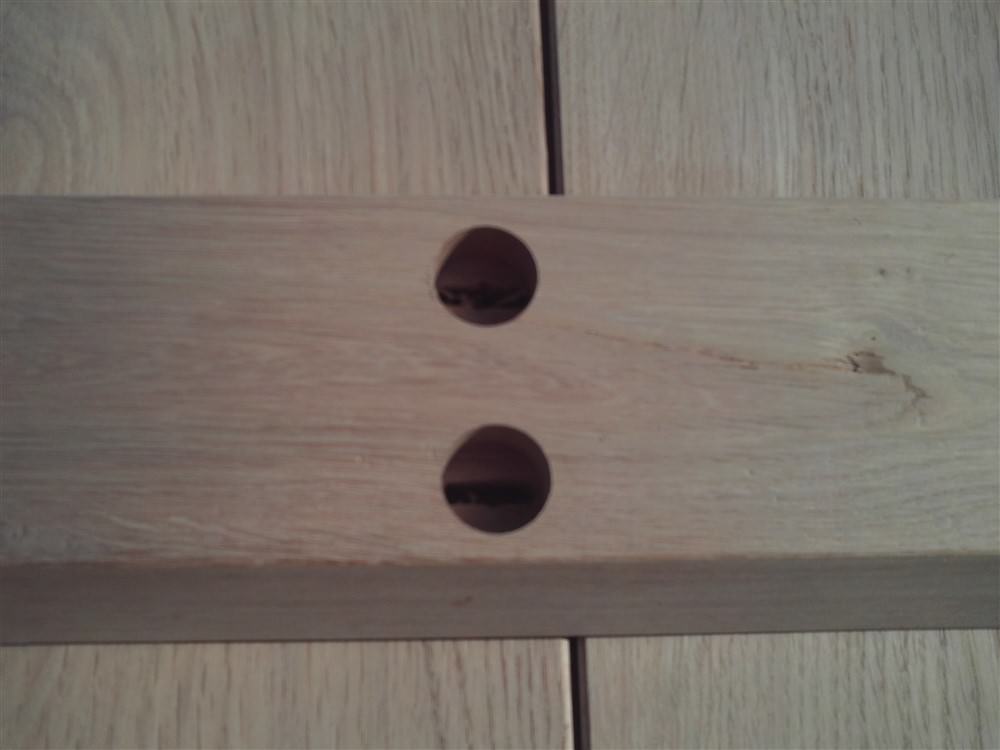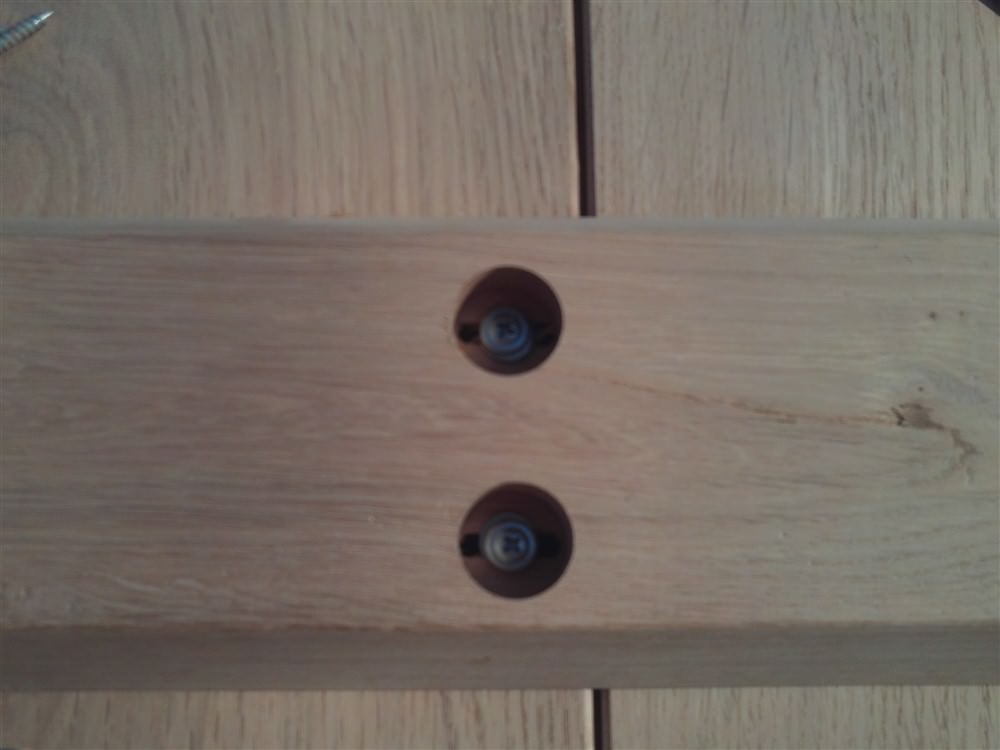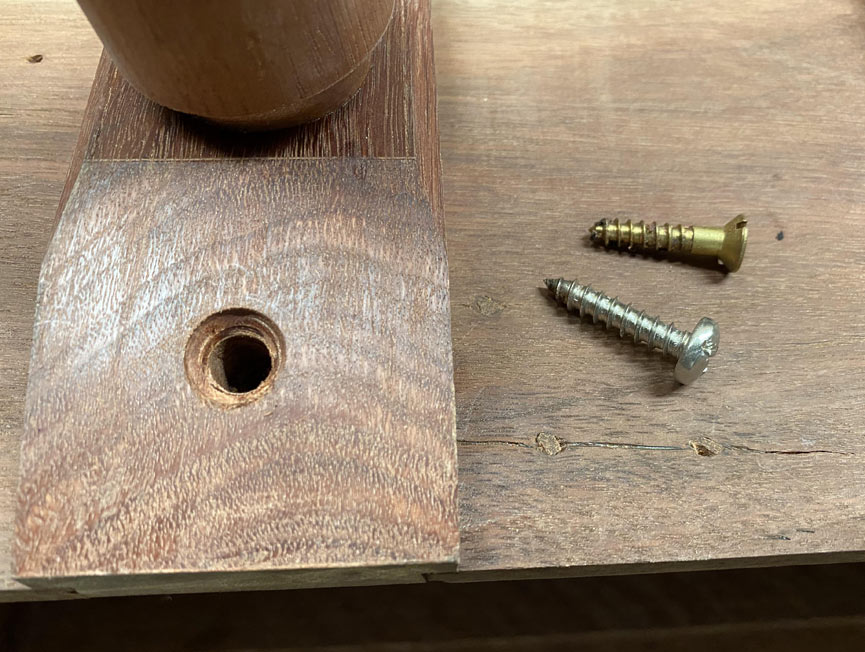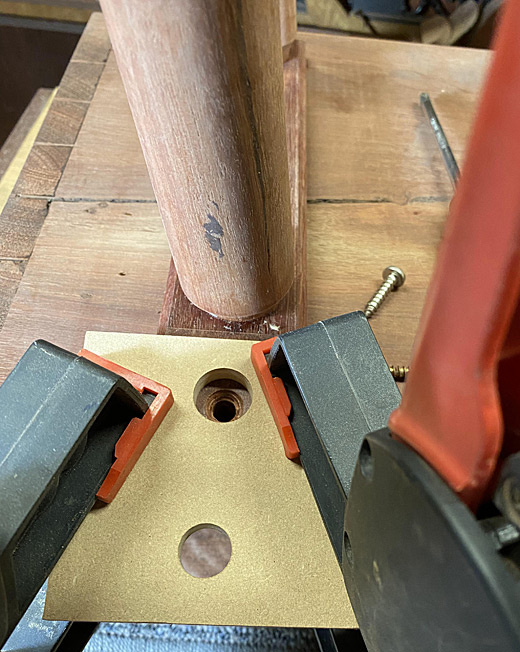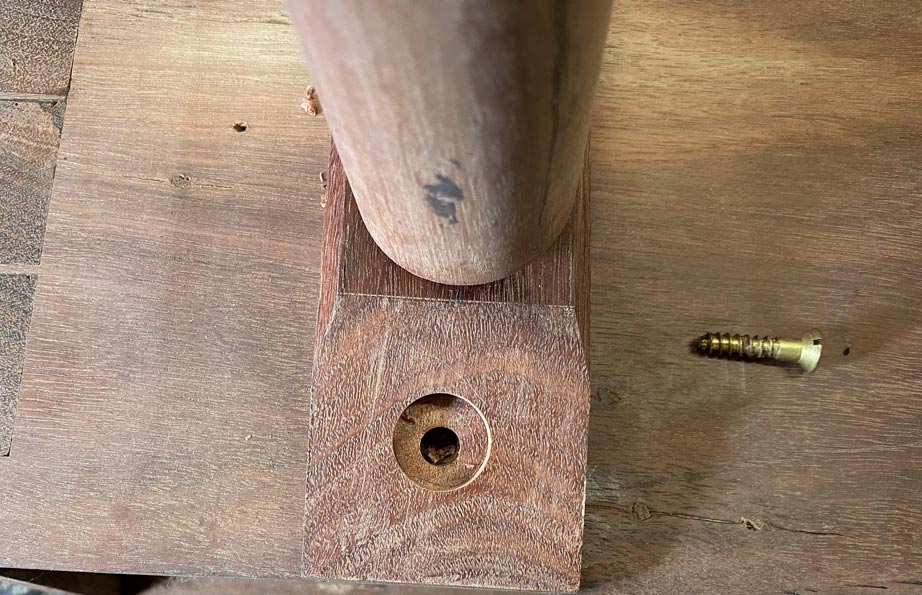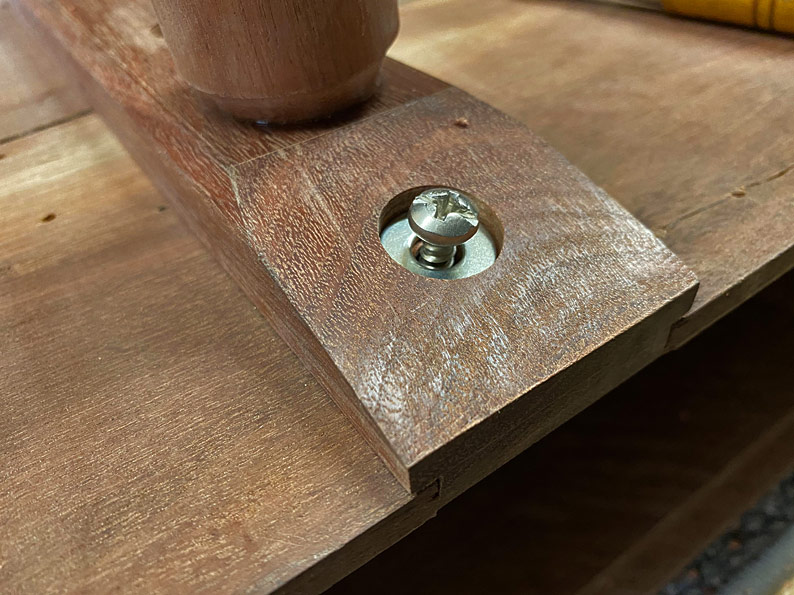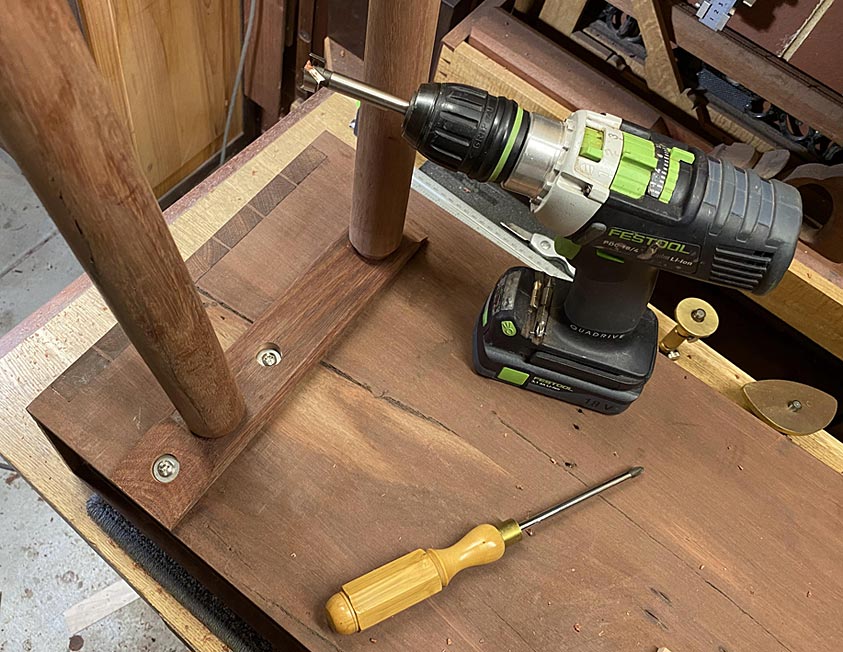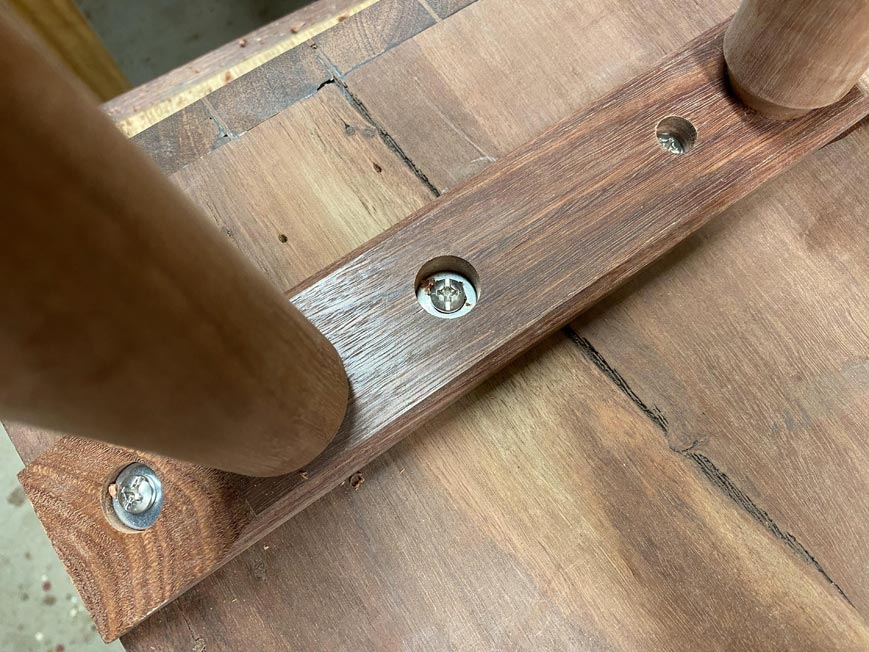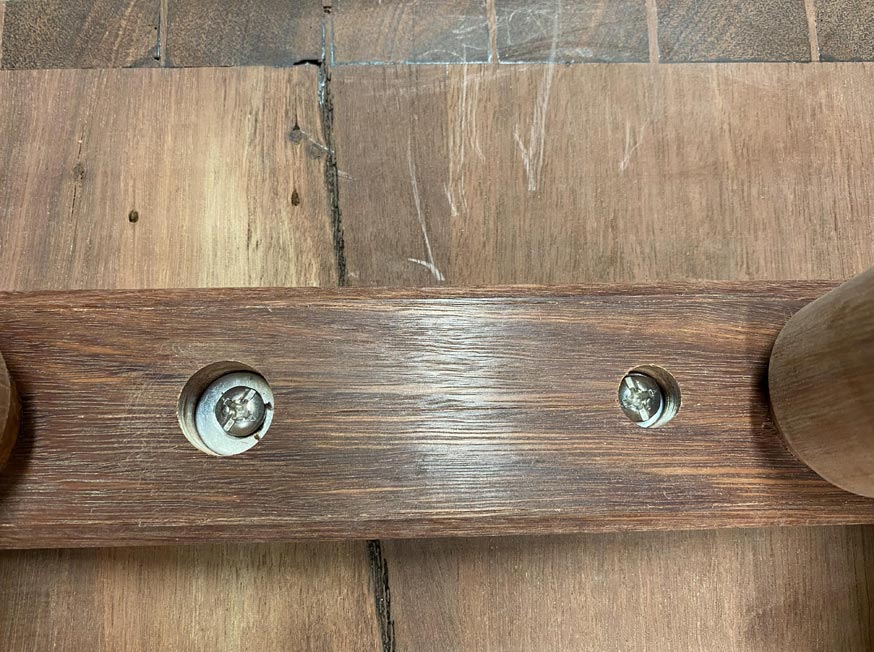It's time for the drawers. Once again there is a challenge. The design calls for drawer fronts that stretch across the front without being broken by drawer dividers. In other words, "lipped drawers".
There are two ways to do this. The easy way is to used "planted fronts", that is, attached fronts to the front of a box ...
The hard way is to make the drawer front a single piece. This requires rebating the drawer front and forming a half blind dovetail in the side of the rebate. Courtesy of Christian Becksvoort ...
I've chosen the high road (sigh).
Today I spent my time preparing for three drawers. Why three and not two, as in the original design? Simply because I can build them narrower, and this will make them less likely to rack. They'll end up somewhere around 280mm wide and 290mm deep. I anticipated that 375mm wide and 290mm deep would be a disaster waiting to happen. The only way drawers that dimension could work is on runners, which I do not do.
The wood for the drawer front is more Fiddleback Jarrah (by request), while the remainder of the drawer is quarter sawn Tasmanian Oak (which is actually a Eucalyptus, and is quite unstable unless quarter sawn. I keep a stock for drawers). It is a lot like US White Oak in appearance and hardness.
I have a bunch of narrower boards, which I re-sawed to make 7mm thick drawer sides, and glued together two to get the height needed ...
No clamps, just blue painter's tape, which is stretched across. It pulls the edges together.
This is enough for 4 drawer sides (one spare) ...
The drawer bottoms will be 1/4" (6.35mm) thick ..... I cannot go metric here as my plough blade is imperial

.... this is re-sawn from a wide board, which saves some effort as only two boards are needed for the bottoms (the grain runs across the drawer) ...
Same trick with the blue tape, and cauls are also added to keep it flat. This will be sawn up at the time it is needed, and the panel will remain in the cauls until thn.
The narrow drawer sides necessitate using drawer slips, which is a strip added to the sides with a groove for the drawer bottom. This also adds extra width as a runner.
The slips are made with a plough plane. In this case, I used both a Veritas Small Plow (to plough the groove) and the Veritas Combination Plow (to plough a bead - the bead lies at the join of the slip and drawer bottom). Setting up both save time switching set ups back and forth, and once begun, making these slips was a quick process ...
First plough the bead ...
A tip on how to avoid over-planing the bead. This comes from David Charlesworth. Scribble pencil along the top of the bead, and when it is gone, the bead is complete ...
Now flip the board around to plane the groove ...
The first line is where the groove begins, which is 3mm below the bead. There will follow a 1/4" groove, and there will be 4mm below this to support the groove/drawer bottom. This makes the slip a smidgeon over 12mm high. It is 10mm deep, which allows for a 5mm deep groove.
As mentioned, once set up, no further marking is necessary. Just plane ...
... and then rip off the slip on the table saw.
This is a mock up: the bead at the top and the groove on the side ...
I have a strategy to fit the drawer fronts, so that the edges align with each other. It is all about accurate marking out. This will hinge on getting the opening exact, and transferring the respective measurements to their drawer fronts.
First order of the day was to fit (what will become) drawer backs to the front between the drawer dividers. This is what the result looked like ...
The table saw can cross cut really close, but only a shooting board will get the final dimension ...
On to the all-important drawer fronts!
I was heartened that all the verticals were indeed vertical still ... well, except for one (if you look carefully, you will see light in the top half) ...
This meant a slight adjustment of that side .. again a job for the shooting board.
Set one, mark the angle with a small sliding bevel ...
... transfer this to the side of the board, and head for the shooting board. As the side is no longer square, a shim is used to create the needed angle ...
A good result ...
This is the join I need to manage ...
These are the fronts fitted in sequence ...
And here were are now, waiting for the next build day ...
Regards from Perth
Derek



